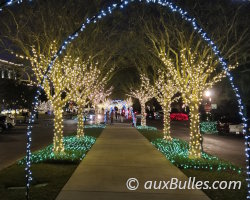Sealife guideThe stoplight parrotfishSparisoma viride
Last updated on 09/02/2024 at 11:51 PM

The stoplight parrotfish (Sparisoma viride)
Taxonomy
- Common name: Stoplight parrotfish, dark green parrotfish
- French name: Poisson perroquet feu
- Spanish name: Loro brilloso
- Scientific name: Sparisoma viride (Bonnaterre, 1788)
- Family name: Scaridae
- Order name: Perciformes
- Class name: Actinopterygii
Description
The stoplight parrotfish is named for the distinctive yellow mark at the base of its pelvic fins, which resembles a « traffic light ». However, this mark is characteristic of the male, and the female looks quite different ! Thus, it can be challenging for novices to realize that the female stoplight parrotfish is the same species !
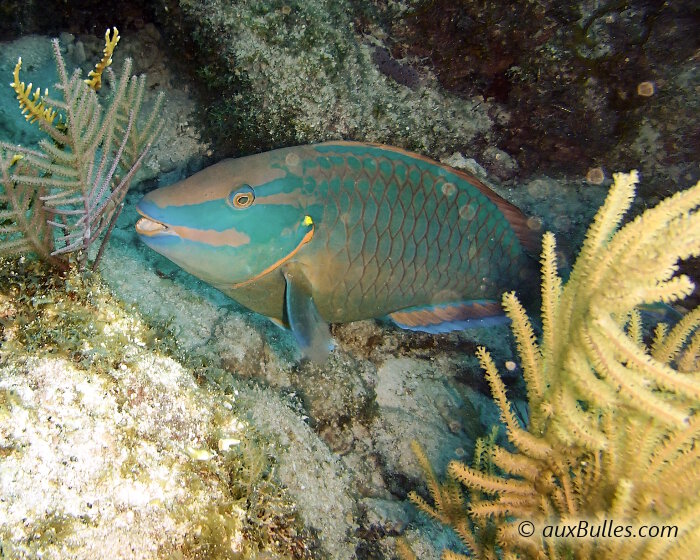
After changing sex to become a male, the stoplight parrotfish's coloration undergoes a dramatic transformation, shifting to a predominantly bluish hue with a turquoise-blue mottled head and a distinctive yellow mark at the base of its pelvic fins
At birth, the stoplight parrotfish is female and has a predominantly greenish color sprinkled with whitish scales. Its anal fins and the base of its belly are red. The end of the tail is also red, bordered by a broad whitish band.
As a male, whether from birth or after a sex change, the stoplight parrotfish transforms dramatically, adopting a bluish hue with a turquoise-blue mottled head and a distinctive yellow mark at the base of its pelvic fins. Its anal and pelvic fins are edged with a blue trim.
The stoplight parrotfish is a medium-sized fish, averaging about 12 inches in length, with a maximum size of 24 inches.
Geographic range
This fish is commonly found in the Caribbean sea, the Gulf of Mexico and along the coasts of
Florida. The stoplight parrotfish inhabits the western tropical Atlantic ocean, from
Florida in the north to Brazil in the south, including Central America and the Caribbean, with its many islands such as the Keys, the Bahamas and
Guadeloupe.
Habitat
The stoplight parrotfish typically lives in shallow waters from the surface down to 164 feet. It is a solitary fish that inhabits clear coral reefs.
Diet
Equipped with a powerful jaw, resembling a bird's beak, which gives it its name, the stoplight parrotfish grazes on the surface of dead coral to feed on the microalgae covering it. It also scrapes and crushes a part of the superficial layer of dead coral with its strong jaw. The crushed coral is then expelled as fine powder, contributing actively to the formation of white sand in coral reef areas.
Reproduction
The stoplight parrotfish is a
hermaphrodite; if born female, it can change to male depending on environmental conditions, but if born male, it will remain so. This sex change is accompanied by a color change that makes it easy to distinguish males from females.
Did you know ?
The stoplight parrotfish plays an important role in creating the white sandy bottoms that characterize lagoons, giving them their turquoise-blue color.
The different color phases associated with the transformation of the stoplight parrotfish can be misleading, leading scientists to believe there were more species than actually exist, so don't be fooled !
The stoplight parrotfish is listed as many other marine species within The
IUCN Red List of threatened species. The stoplight parrotfish appears in the
IUCN Red List since 2012 within the category Least Concern !
Tips for observing
Observe the whitish plumes expelled by the stoplight parrotfish, which correspond to the crushed coral expelled by its powerful jaw !
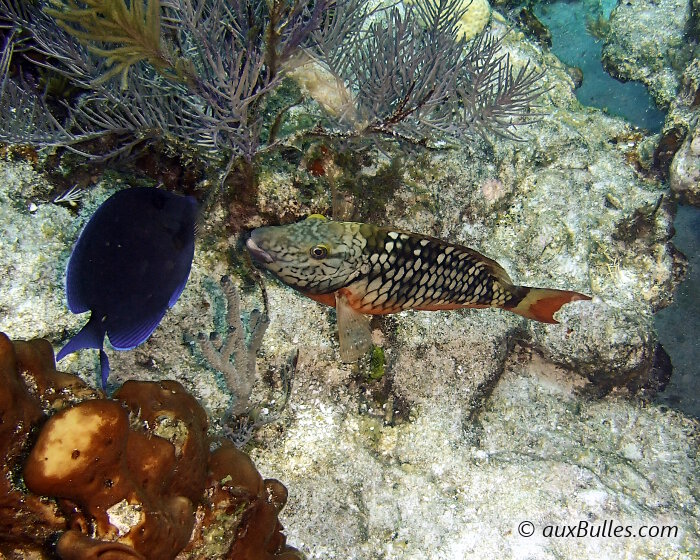
At birth, the stoplight parrotfish is female and displays a predominantly greenish color scattered with whitish scales
Within the same genus
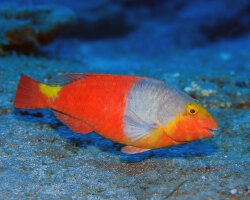
European parrotfish
(Sparisoma cretense)
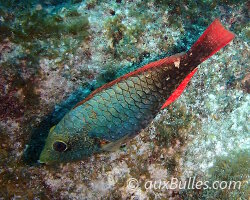
Redband parrotfish
(Sparisoma aurofrenatum)
Within the same family
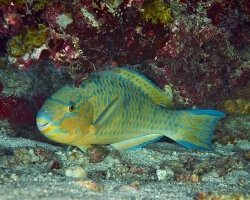
Blue-barred parrotfish
(Scarus ghobban)
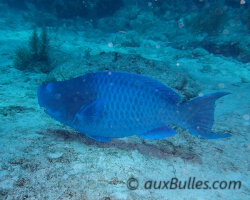
Blue parrotfish
(Scarus coeruleus)

Ember parrotfish
(Scarus rubroviolaceus)
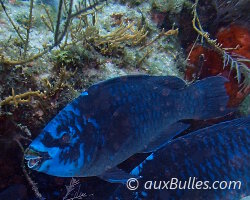
Midnight parrotfish
(Scarus coelestinus)
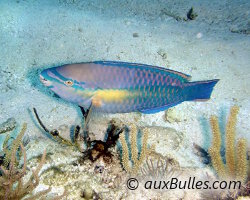
Princess parrotfish
(Scarus taeniopterus)
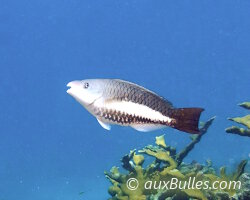
Queen parrotfish
(Scarus vetula)
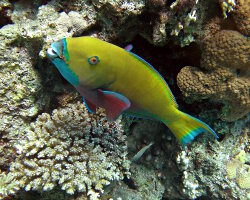
Rusty parrotfish
(Scarus ferrugineus)
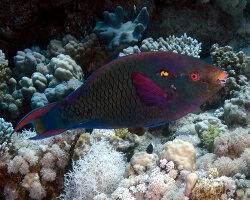
Swarthy Parrotfish
(Scarus niger)
Discover also

Aron's blenny
(Ecsenius aroni)

Eastern clown anemonefish
(Amphiprion percula)
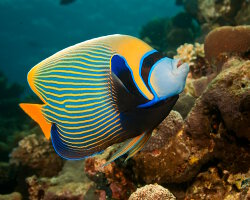
Emperor angelfish
(Pomacanthus imperator)
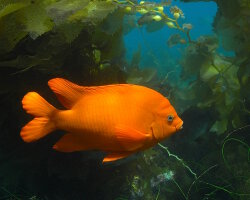
Garibaldi
(Hypsypops rubicundus)

Leerfish
(Lichia amia)

Spotgill cardinalfish
(Ostorhinchus chrysopomus)

Tailspot goby
(Amblygobius albimaculatus)
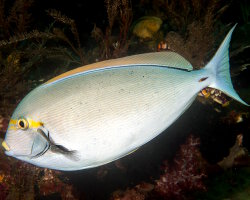
Yellowmask surgeonfish
(Acanthurus mata)
The marine species from Caribbean sea

Gag grouper
(Mycteroperca microlepis)
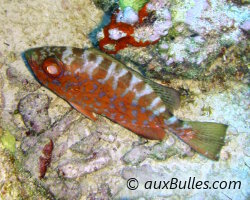
Glasseye snapper
(Heteropriacanthus cruentatus)
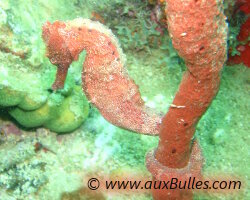
Longsnout seahorse
(Hippocampus reidi)
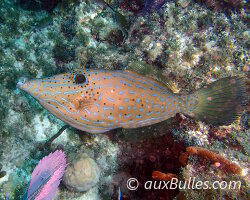
Scrawled filefish
(Aluterus scriptus)

Sharptail eel
(Myrichthys breviceps)
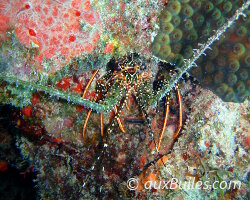
Spotted spiny lobster
(Panulirus guttatus)
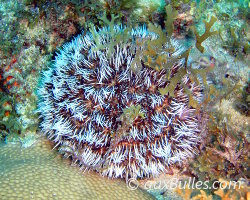
West Indian sea egg
(Tripneustes ventricosus)

Yellowhead jawfish
(Opistognathus aurifrons)
Dive centers
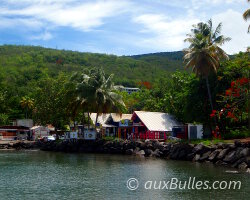
'Les Ilets' dive center
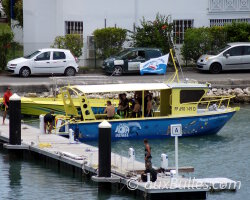
Noa dive center

































